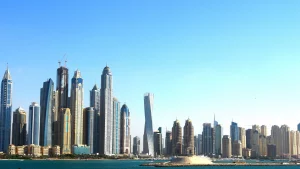You know that phenomenon that causes for a word to lose its meaning after repeating it too many times? Well, lately I’ve had the impression that’s what’s happened with the word sustainability. It seems like every time the word appears on any article or post, it’s referencing something different and that’s how I figured that what’s causing all of the confusion is that we are using sustainability to name a wide variety of concepts that we should know how to clearly identify and differentiate. So that is exactly the objective of this article.
The first step is to shed some light on what sustainability is. Starting with a basic definition, sustainability expresses the ability to maintain a certain rate, level or action indefinetly over time. This means meeting our own needs and maintaining our current life quality without compromising the ability of future generations to meet their own needs or jeopardizing their life quality. The use of fossil fuels, for example, isn’t sustainable because we’re compromising the life quality and needs of generations to come. The second thing you need to bear in mind is that in order for something to be sustainable, it must meet the triple bottom line, or 3 Ps: Planet, People and Profit. If the plan, action or product doesn’t meet any of those 3 areas, it cannot be called sustainable.
- · Environmental sustainability (Planet): Ecological integrity is maintained. All of Earth’s environmental systems are kept in balance while natural resources within them are consumed by humans at a rate where they are able to replenish themselves.
- · Social sustainability (People): Human communities are able to maintain their independence, have access to the resources that they require and basic needs are attainable by all people, such as secure sources of livelihood or affordable housing.
- · Economic Sustainability (Profit): The project needs to be financially and overall long-term viable.
All of this being said, I am now going to list some of the terms that are usually named as sustainable and argue which of the concepts actually are sustainability synonyms and which might not be.
Energy Efficiency

This term references all of those strategies that reduce the primary energy demand and/or make buildings more self-sufficient energetically. Installing solar panels, using bioclimatic principles or using thermal insulation are some of the strategies that are typically used. Off-the-grid houses or Passivhaus certified buildings are examples of extremely energetically efficient infrastructure but they could still be made with high impact and expensive materials which would make them non-sustainable. Therefore, energy efficient houses lower the building’s impact (because you’ll require less resources to maintain it) but it doesn’t imply sustainability.
Use of Natural Materials

There is a general belief that using natural and unprocessed materials makes us more sustainable but there are many other factors to be taken into account. Where is it coming from? The longer the transport distance, the bigger the environmental impact. Does it come from a responsible exploitation? In other words, does the exploitation where it comes from let the source regenerate naturally before collecting more material? Let’s say a house that’s built out of natural stone and wood, the stone could be sourced thousands of kilometers away and wood could come from a non-controlled exploitation that contributes to deforestation. Using natural materials is always preferable to conventional processed ones as they are more recyclable (sometimes even biodegradable), they require less production energy and their toxic contents are usually lower, but remember to watch out for the source location and exploitation type. The construction Mas Marroch, in Catalonia, is an excellent example of a sustainable project built almost entirely with zero-kilometer natural, abundant materials.
Environmental certifications
Certifications such as LEED or BREEAM help us obtain lower impact buildings but not sustainable ones. I could have a BREEAM building that runs on fossil fuels or a LEED building made mostly out of metal. Although green-certified buildings will undoubtedly have a smaller environmental impact than a conventional one, most of them can still be compromising the resources left for future generations. Furthermore, the majority of these certifications rarely take into account the economic sustainability part. A building with an environmental certification does imply it has a smaller environmental and social impact but it still doesn’t mean it is sustainable.
Regenerative design
This is a strategy that is starting to be used in building design and its objective is to achieve net-positive impacts for ecology, health and society to remediate the harm that has been done during the years of conventional development. The philosophy behind this strategy is to emulate natural ecosystems to ensure that the building will be fully integrated in the environment and will therefore be able to sustain itself during the years to come. Hence, regenerative design does imply sustainability. Living Building Future is the environmental certification that most emphasizes the need of using regenerative design in the building stock. Here you can check out case studies of some of their projects.
Circular Economy

This trendy term describes a model of production and consumption that involves reusing, repairing, refurbishing and recycling existing materials, products and infrastructure for as long as possible. In practice, most of the strategy consists in reducing the materials used to a minimum, reducing waste, eliminating toxic substances from the cycle and using pieces that can be easily disassembled, replaced and recycled. Any building or project that works entirely using this model can be called sustainable. Construcia is a building contractor who, associated with EIG consultants, builds using this model.
To wrap it up, all efforts to lower impact in our building stock need a tremendous amount of strategic thinking and planning. Achieving sustainability is very challenging and every step that can take us in that direction (energy efficiency, use of zero km materials, …) is extremely valuable. Non the less, I think it is important to name each strategy by its proper name and make a difference between true sustainability and impact-minimizing strategies to ensure that the term sustainability doesn’t lose meaning.



